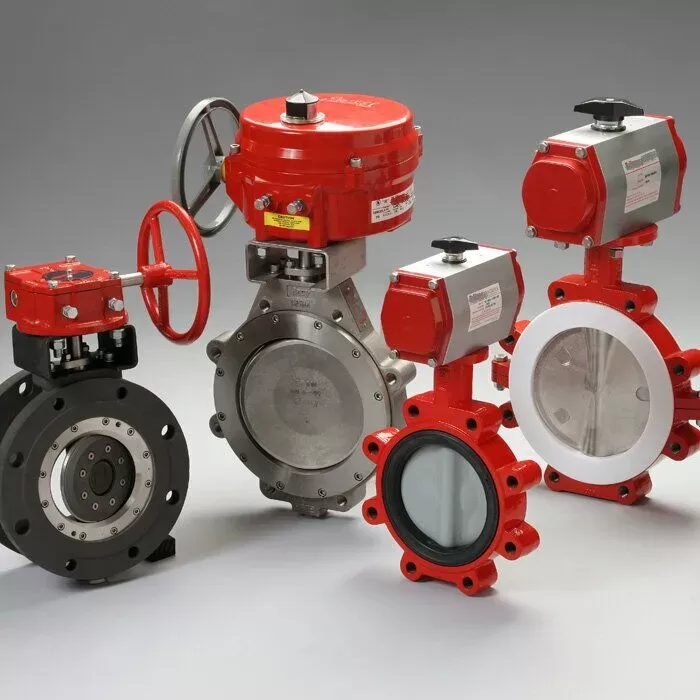Notifications

7 minutes, 5 seconds
-213 Views 0 Comments 0 Likes 0 Reviews

Introduction
We are a leading control valve manufacturer in China, providing high-performance valves and control actuators engineered to meet a wide range of industrial applications.
Butterfly control valves are highly versatile, quarter-turn valves that regulate fluid flow through a pipeline using a rotating disc. When positioned perpendicular to the flow, the disc can be opened or closed by rotating the valve, effectively managing fluid movement. These valves are widely used across industries due to their affordability, quick operation, and high flow capacity. Common applications include HVAC systems, water treatment and distribution facilities, chemical processing plants, and various industrial systems.
Butterfly valves offer several advantages over other valve types, including a compact footprint and simple construction. However, to ensure long-term reliability and efficiency, proper maintenance is essential. Without it, performance can decline and system failures may occur. This article provides an overview of the primary types of butterfly control valves, common issues encountered, and best practices for maintenance and troubleshooting.
Types of Butterfly Control Valves
Butterfly control valves are available in multiple configurations, each designed for specific operational requirements. The three primary types are wafer, lug, and flanged valves.
Wafer-style butterfly valves are lightweight and compact, designed to fit between flanges in a pipeline without their own flanged ends. Instead, holes in the valve body align with the flange bolt pattern, securing the valve in place. These valves are ideal for tight installations and are commonly used in HVAC systems, water treatment plants, and distribution networks.
Advantages:
Lightweight and compact design
Cost-effective
Simple to install and maintain
Disadvantages:
Limited pressure handling
Unsuitable for isolation applications
Lug-style valves feature threaded inserts that allow the valve to be bolted directly to the pipeline. This enables the removal of piping from one side without disrupting the other, providing greater flexibility during maintenance. Lug valves are more robust than wafer types and are commonly used in the chemical, oil, and gas industries.
Advantages:
Secure and stable pipeline connection
Allows one-sided disassembly
Suitable for medium to high-pressure systems
Disadvantages:
Higher cost than wafer types
Heavier construction
Flanged butterfly valves come with integral flanges on the valve body, allowing for a secure, leak-resistant connection. These valves are designed for high-pressure, high-temperature environments and are widely used in power generation, chemical processing, and oil and gas applications.
Advantages:
Excellent for demanding, high-pressure applications
Reliable, leak-free sealing
Durable and long-lasting
Disadvantages:
Higher initial cost
Bulkier and heavier design
Maintenance of Butterfly Control Valves
Routine maintenance is key to ensuring the efficient operation and longevity of butterfly valves. Below are the essential practices for keeping these valves in optimal condition:
Conducting routine inspections helps detect issues early and prevents major failures.
Check the following components:
Valve Body: Look for cracks, corrosion, or leakage.
Disc: Ensure it's clean and free from deformation.
Stem: Confirm it’s securely connected and shows no signs of wear.
Seat: Inspect for damage or wear that could cause leakage.
Actuator: Test for proper operation and alignment.
While most butterfly valves require little lubrication, pneumatic actuators may benefit from lubricated air. Ensuring smooth actuator operation helps prevent sticking or delays.
Best Practices:
Use recommended lubricants.
Avoid over-lubrication.
Clean and inspect actuators regularly.
Contaminants on the disc or seat can hinder performance and cause leakage.
Tips:
Clean internal components with suitable cleaning agents.
Flush the system regularly.
Avoid abrasive materials that could damage the valve.
Sealing issues often stem from worn or misaligned packing materials.
Steps:
Gradually tighten packing bolts to avoid damage.
Replace gaskets and seals as necessary.
Use packing materials compatible with system fluids.
The actuator is central to valve performance, especially in automated systems.
Actions:
Verify actuator-stem alignment.
Test for responsiveness and accuracy.
Calibrate periodically for precise control.
Troubleshooting Common Issues
Even with proper care, butterfly valves may experience operational problems. Below are frequent issues and how to resolve them:
Cause: Damaged seat or seals.
Solution:
Replace the seat or seals.
Check for proper bolt tightening and alignment.
Conduct pressure testing to confirm sealing.
Cause: Debris buildup or actuator problems.
Solution:
Clean internal components.
Check and recalibrate actuator.
Inspect the stem and bearings.
Cause: Misaligned disc or actuator failure.
Solution:
Verify actuator calibration.
Ensure disc rotates freely.
Examine the control system for faults.
Cause: Loose components or poor installation.
Solution:
Tighten bolts and fasteners.
Check pipeline supports.
Confirm installation complies with manufacturer guidelines.
Conclusion
Butterfly control valves are essential components in many industrial systems due to their efficient, reliable, and cost-effective operation. However, to ensure consistent performance and longevity, regular maintenance and prompt issue resolution are vital.
By implementing proactive practices—such as routine inspections, proper lubrication, and timely cleaning—operators can minimize downtime and maximize operational efficiency. With careful attention to both the valve and actuator components, butterfly control valves can deliver dependable flow control and pressure regulation, keeping processes running smoothly for years to come.Know more about Google SEO Directory
Generator Set Manufacturer China Generator Sets China genset manufacturer China Generator Manufacturer China Gensets China Genset Supplier

